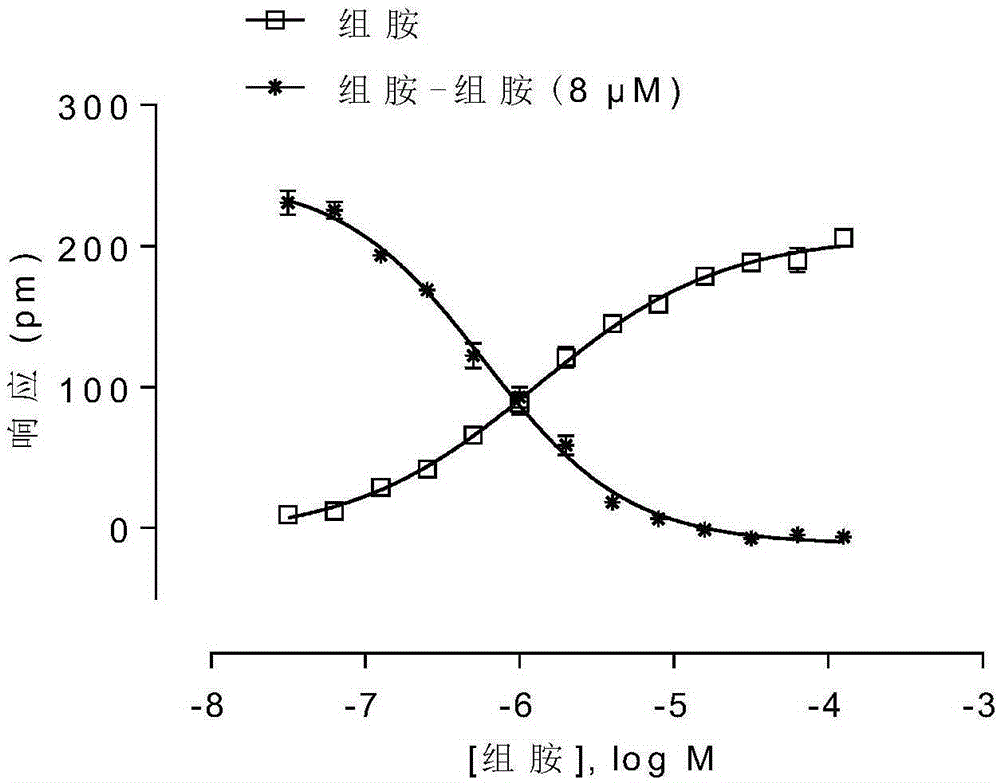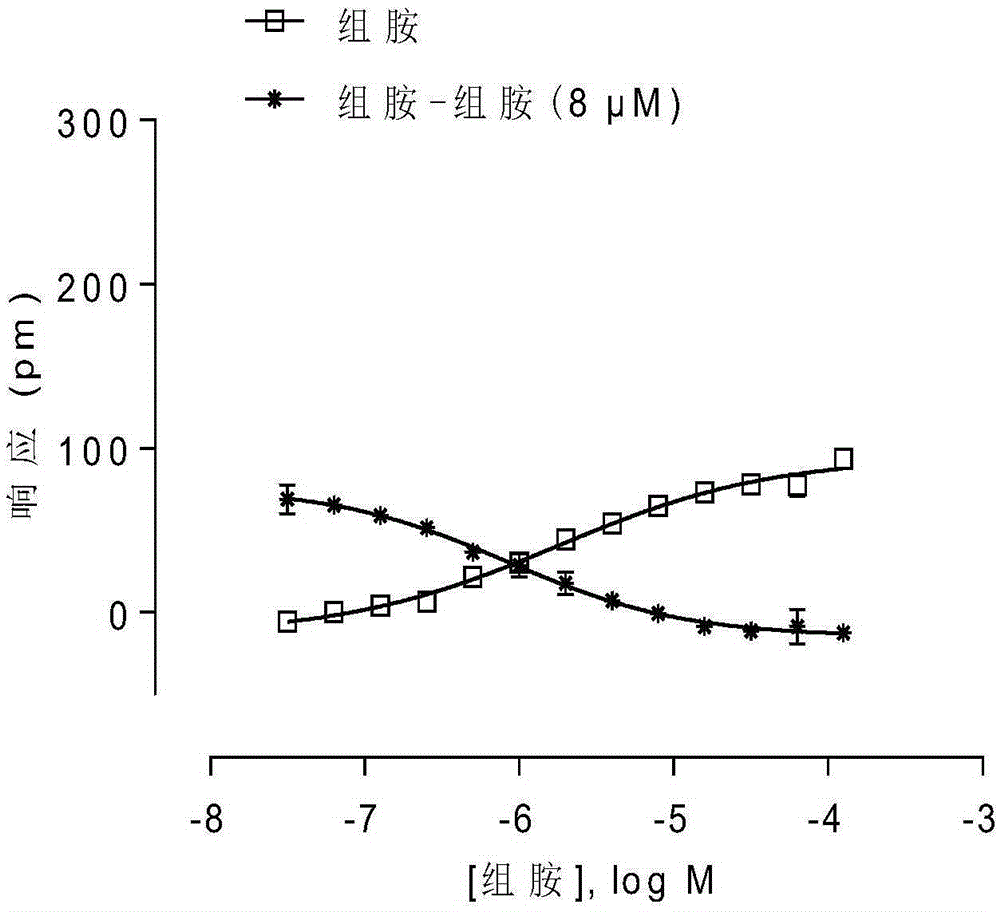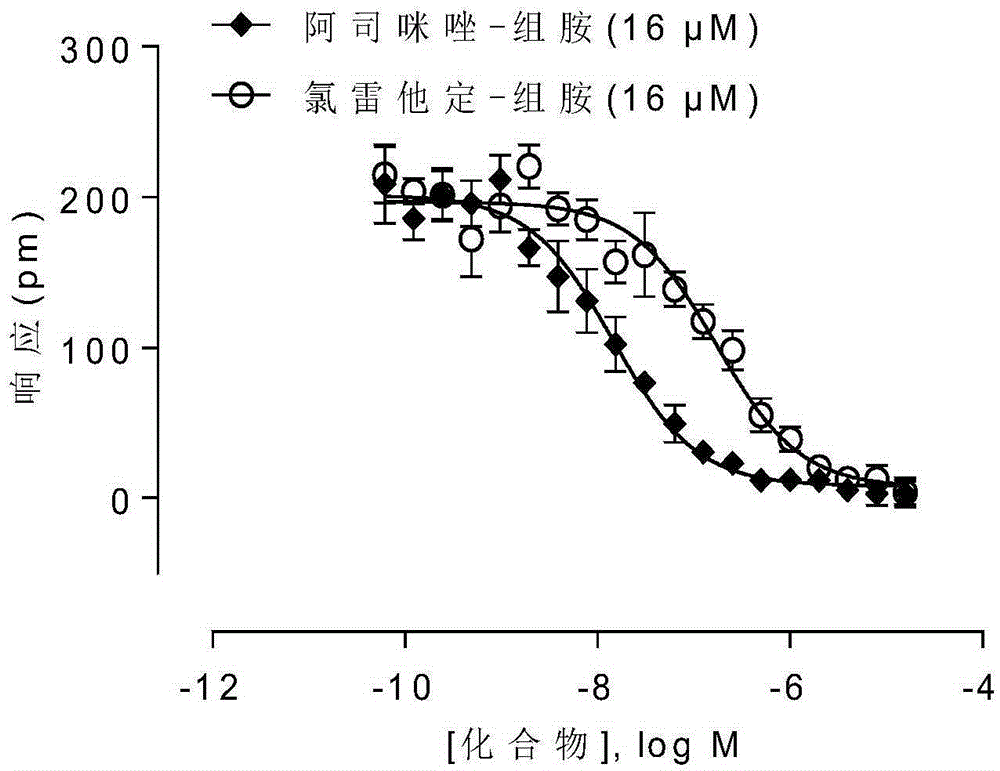Screening method for histamine H1 receptor antagonist
A technology of receptor antagonists and screening methods, applied in the field of drug screening research, can solve the problems of anticholinergic weight gain and other problems, and achieve high sensitivity and high throughput effects
- Summary
- Abstract
- Description
- Claims
- Application Information
AI Technical Summary
Problems solved by technology
Method used
Image
Examples
Embodiment 1
[0052] Example 1 Establishment of histamine H1 receptor antagonist screening method
[0053] 1. Method
[0054] 1.1 Cell culture
[0055] A-431 human epidermal carcinoma cells and A-549 human non-small cell lung cancer cells were obtained from the Cell Bank of the Type Culture Collection Committee of the Chinese Academy of Sciences (Shanghai, China). A-431 cells were treated with DMEM medium containing 10% fetal bovine serum, 100 U / ml ampicillin, and 100 μg / ml streptomycin sulfate (GIBCO, product number 12800017, containing D-Glucose 4.5g / L, adding NaHCO 3 1.5g / L), at 37°C, 5% CO 2 A-549 cells were cultured in an incubator at 37°C and 5% CO2 with F12K medium containing 10% fetal bovine serum, 100 U / ml ampicillin, and 100 μg / ml streptomycin sulfate.
[0056] 1.2 Pharmacological experiments of unlabeled cell targets
[0057] A-431 cells or A-549 cells in 2×10 4 Individuals / well density seeded to 384-well biosensor microplates, placed at 37°C, 5% CO 2 cultured in an incub...
Embodiment 2
[0071] Example 2 Application of Histamine H1 Receptor Antagonist Screening Method
[0072] The histamine H1 receptor antagonistic activity of 40 compounds to be tested was screened by using label-free cell target pharmacology technology. First, 10 μL of the compound to be tested (maximum working concentration 64 μM, 2-fold dilution, 2 concentration gradients) was added to cells inoculated with A-431 cells or A-549 cells. 384-well biosensor microplates, in Monitor on the system for 30min, then add 10μM histamine (8μM) and continue to monitor for 30min, according to the degree of antagonism of the maximum DMR response signal caused within 30min after adding histamine in the second step to judge the antagonism activity of the test compound on the histamine H1 receptor, Among them, arctigenin shows H1 receptor antagonistic activity. After pretreatment of A-431 cells with arctigenin (maximum working concentration 64 μM, 2-fold dilution, 7 concentration gradients), 16 μM histami...
PUM
 Login to View More
Login to View More Abstract
Description
Claims
Application Information
 Login to View More
Login to View More - R&D
- Intellectual Property
- Life Sciences
- Materials
- Tech Scout
- Unparalleled Data Quality
- Higher Quality Content
- 60% Fewer Hallucinations
Browse by: Latest US Patents, China's latest patents, Technical Efficacy Thesaurus, Application Domain, Technology Topic, Popular Technical Reports.
© 2025 PatSnap. All rights reserved.Legal|Privacy policy|Modern Slavery Act Transparency Statement|Sitemap|About US| Contact US: help@patsnap.com



